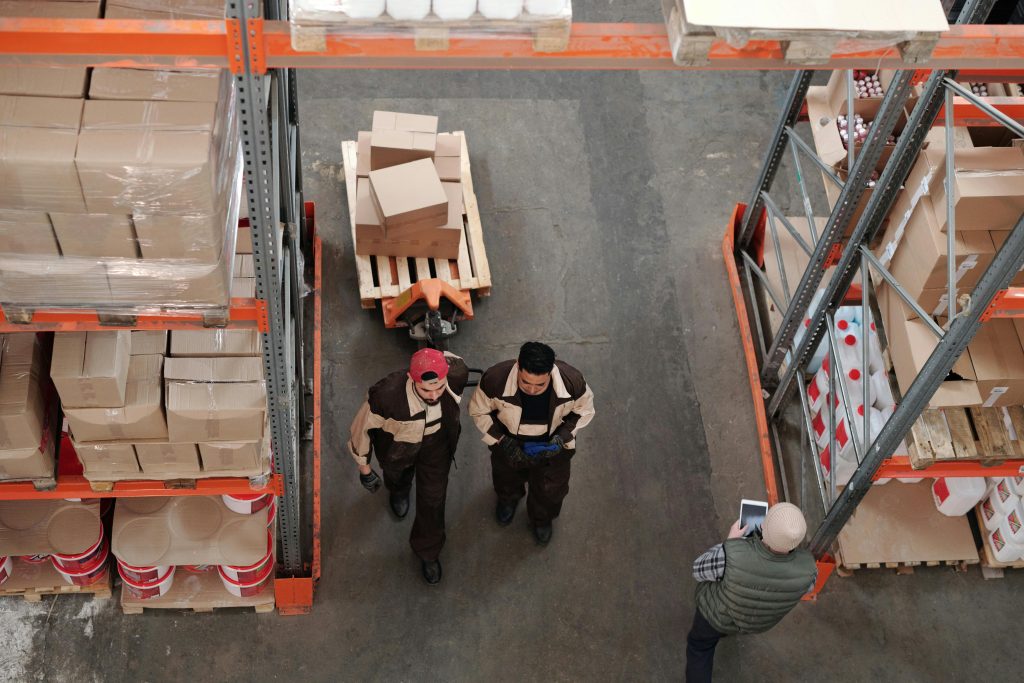Introduction
In today’s fast‑paced supply‑chain landscape, businesses continuously seek ways to reduce costs, accelerate delivery, and improve inventory efficiency. Cross‑docking has emerged as a powerful logistics strategy that transforms traditional warehousing by minimizing storage time and accelerating the flow of goods. Instead of shelving inbound shipments for later picking, a cross‑dock facility directly transfers products from arriving trucks to outbound vehicles—often within hours of receipt. This streamlined approach can dramatically lower on‑hand inventory, shorten order‑to‑delivery cycles, and reduce handling costs. Yet, cross‑docking isn’t a one‑size‑fits‑all solution. It demands precise coordination, robust technology, and careful analysis of product characteristics.

In this comprehensive guide, we’ll explore:
- The fundamentals of cross‑docking: definitions, types, and operational steps
- The impact on inventory management: how cross‑docking reshapes stock levels, safety buffers, and accuracy
- Key benefits: from cost savings to faster fulfillment
- Potential challenges and risks: and how to mitigate them
- Implementation best practices: technology, layout, and process design
- Real‑world examples: success stories from retail, manufacturing, and food distribution
- Future trends: automation, real‑time data, and integrated supply‑chain ecosystems
By the end, you’ll have a clear framework to assess whether cross‑docking aligns with your business needs and how to harness it to optimize your inventory and logistics operations.
1. Understanding Cross‑Docking
1.1 Definition and Core Principles
Cross‑docking is a flow‑through warehousing strategy where inbound inbound shipments are unloaded and directly transferred to outbound distribution—with minimal or zero storage time. Unlike conventional warehousing, which involves receiving, put‑away, picking, and shipping cycles, cross‑docking emphasizes rapid sorting and consolidation.
- Inbound Dock: Suppliers’ trucks arrive carrying pallets or cartons.
- Staging Area: Goods are quickly verified against Advanced Ship Notices (ASNs) and sorted by destination.
- Outbound Dock: Consolidated loads are loaded onto customer or retail‑bound vehicles.
The guiding principle is “receive → sort → ship”, eliminating intermediate storage steps.
1.2 Types of Cross‑Docking
- Manufacturing Cross‑Docking
Components from multiple suppliers converge in a cross‑dock for immediate delivery to assembly lines, supporting just‑in‑time (JIT) production. - Distributor Cross‑Docking (Pre‑Distribution)
Manufacturers ship large volumes to a cross‑dock, where goods are sorted into smaller orders and dispatched directly to retail stores or customers. - Transportation Cross‑Docking (Hub‑and‑Spoke)
Carriers consolidate shipments from various origin points at a regional hub before distributing them to final destinations, optimizing route efficiency. - Retail Cross‑Docking
Retailers use cross‑dock centers to consolidate inventory for multiple stores, reducing lead times and safety stocks at each location.
1.3 Key Operational Steps
- Pre‑Arrival Planning
- Suppliers transmit ASNs detailing SKU, quantity, and packaging configuration.
- The cross‑dock schedules dock appointments to balance workloads.
- Inbound Unloading
- Goods are received, scanned, and matched to ASN data.
- Quality checks occur spot‑wise to catch shipping errors early.
- Sorting and Consolidation
- Items are routed via conveyor belts or manually moved to outbound lanes, grouped by route or customer.
- Pallet building for mixed pallets destined for the same location.
- Outbound Loading
- Consolidated loads are loaded onto outbound vehicles, double‑checked for completeness.
- Digital proof of loading and departure times are captured for tracking.
- Real‑Time Visibility
- Warehouse Management Systems (WMS) and Transportation Management Systems (TMS) track every movement, triggering alerts for delays or mismatches.
2. Impact on Inventory Management
2.1 Reduced On‑Hand Inventory
- Minimal Storage Time: Products rarely dwell in inventory beyond a few hours, keeping stock levels lean.
- Lower Safety Stock: Real‑time replenishment and frequent deliveries allow firms to carry smaller buffers, reducing carrying costs.
2.2 Shortened Lead Times
- Faster Fulfillment: By bypassing put‑away and pick cycles, order fulfillment times shrink dramatically—often from days to hours.
- Rapid Response to Demand Fluctuations: Cross‑docking enables just‑in‑time replenishment, aligning inventory more closely with real‑time sales patterns.
2.3 Enhanced Inventory Accuracy
- Fewer Touchpoints: Reduced handling steps minimize errors associated with picking, put‑away, and cycle counting.
- Real‑Time Tracking: Integrated WMS/TMS solutions update stock positions instantly, offering reliable data for decision‑making.
2.4 Lower Holding Costs
- Reduced Warehousing Footprint: Less floor space and racking is required when inventory isn’t stored for long-term.
- Labor Savings: Fewer personnel are needed for put‑away, picking, and replenishment tasks.
2.5 Risk Considerations
- Stockouts: Overly lean inventory can lead to stock shortages if inbound shipments are delayed.
- Scheduling Dependencies: Precise coordination between suppliers, logistics providers, and cross‑dock operations is crucial.
- Product Suitability: Perishables and high-value items may require special handling that complicates rapid transfers.
3. Key Benefits of Cross‑Docking
- Cost Reduction
- Up to 30–50% savings in inventory carrying costs
- 20–40% reduction in labor costs through streamlined handling
- Improved Customer Service
- Faster delivery improves order cycle fulfillment and customer satisfaction
- Consistent on‑time performance enhances reliability perceptions
- Supply‑Chain Agility
- Ability to quickly reconfigure outbound shipments in response to market shifts
- Consolidation of multi‑supplier goods reduces SKU proliferation at regional nodes
- Sustainability Gains
- Fewer handling steps and storage spaces reduce energy consumption and greenhouse gas emissions
- Larger, consolidated outbound shipments optimize truck utilization

4. Challenges and Mitigation Strategies
| Challenge | Mitigation Strategy |
|---|---|
| Scheduling Delays | Implement real‑time slot booking systems with built‑in buffers |
| Data Inaccuracy | Use barcode/RFID scanning integrated with WMS for verification |
| Facility Layout Constraints | Design cross‑dock zones with minimal travel distances |
| Labor Flexibility | Cross‑train staff; use dynamic staffing based on appointment data |
| IT Integration | Ensure robust APIs between WMS, TMS, and supplier systems |
5. Best Practices for Successful Implementation
- Invest in Technology
- Deploy advanced WMS and TMS with cross‑dock modules and real‑time dashboards.
- Leverage RFID or voice‑picking for rapid identification and routing.
- Optimize Facility Layout
- Adopt a “warehouse without walls” concept: inbound and outbound docks face each other with direct conveyor links.
- Minimize staging areas to reduce travel time and handling.
- Develop Strong Supplier Partnerships
- Share forecast and shipment data via Electronic Data Interchange (EDI).
- Agree on penalties or incentives for on‑time, accurate deliveries.
- Train and Empower Staff
- Standardize operating procedures (SOPs) and conduct regular drills.
- Create cross‑functional teams to handle peak workloads and exceptions.
- Monitor KPIs and Continuously Improve
- Track metrics like Dock‑to‑Stock Time (DST), order accuracy, and throughput rate.
- Use Lean and Six Sigma methodologies to identify and eliminate bottlenecks.
6. Real‑World Examples
Retail: Grocery Chain Perishables
A leading grocery retailer implemented cross‑docking for fresh produce. By combining deliveries from multiple farms into consolidated store shipments each morning, they:
- Reduced spoilage by 25%
- Lowered inventory levels in back‑room cold storage by 40%
- Boosted on‑time store fill rates from 88% to 98%
Manufacturing: Automotive Components
An automotive OEM used cross‑docking to feed its final assembly line. Components from tier‑2 suppliers arrived at a central hub and were immediately sorted onto just‑in‑time carts:
- Reduced line stoppages by 30%
- Eliminated two days of buffer stock at each plant
- Improved parts availability accuracy to 99.5%
7. The Future of Cross‑Docking
- Autonomous Material Handling: AGVs and drones transporting pallets between docks without human operators.
- AI‑Driven Slotting: Machine learning optimizing dock assignments and staging plans based on historical flow patterns.
- Digital Twins: Virtual simulations of cross‑dock operations enabling “what‑if” analyses before layout changes.
- Integrated Blockchain Tracing: End‑to‑end visibility of product provenance and real‑time status updates.

Conclusion
Cross‑docking offers a high‑velocity alternative to conventional warehousing, delivering substantial benefits in inventory reduction, cost savings, and customer satisfaction. By carefully selecting suitable products, investing in advanced technology, and fostering collaboration across the supply chain, businesses can implement cross‑docking successfully. However, it requires rigorous scheduling, real‑time data integration, and continuous performance monitoring. As logistics evolve toward greater automation and intelligence, cross‑docking will remain a cornerstone strategy—enabling agile, lean, and responsive supply chains prepared for the demands of tomorrow’s market.

